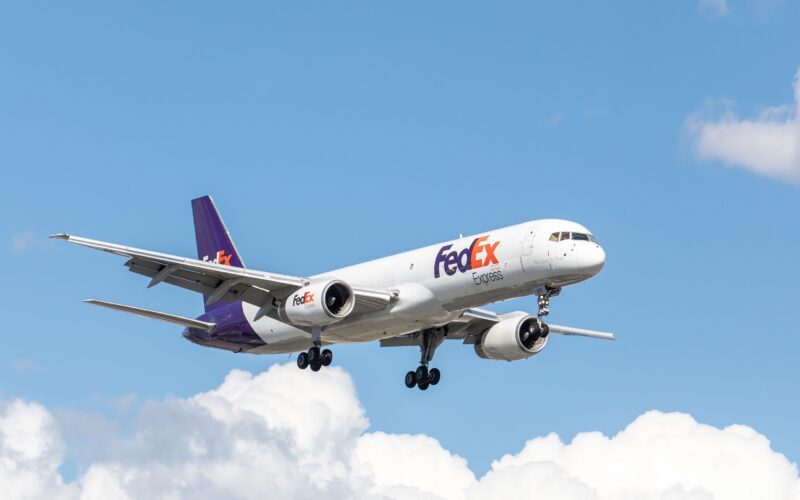The United States (US) National Transportation Safety Board (NTSB) has published its final report about an incident in which a FedEx Boeing 757 landed on the wrong runway in June 2022.
According to the NTSB, the FedEx Boeing 757-200F, registered as N949FD, crew misidentified runway 18R as runway 18L at Tulsa International Airport (TUL). They only recognized that they were on the wrong runway after landing, whereupon the automated runway awareness and advisory system or RAAS alerted the pilots that there were 3,000 feet remaining of the runway.
Upon realizing this fact, the captain of the flight quickly applied heavy braking and exited the runway on the final taxiway.
The aircraft taxied successfully to the ramp without further incident.
Continuation bias and fatigue
Still, the NTSB pointed out that since visibility was clear, “there were available visual cues external to the airplane, to distinguish the runways from one another in their lighting, configurations, and the surrounding environments”. In theory, these should have enabled the crew to distinguish between the two runways.
Furthermore, even if both the horizontal situation indicator (HSI) deviation bar on the Primary Flight Display (PFD) of the first office (FO), plus the captain’s heads-up display (HUD) localizer, were off to the left, “the flight crew appeared to discount the information their instruments were providing in favor of the view they had of the runway and understanding of their circumstances”.
FedEx’s policy also required pilots to double-check all approaches with the Instrument Landing System or ILS.
“The flight crew focused on their flightpath and decent rate for the runway they had already visually acquired, and the multiple visual cues that they were misaligned were not recognized,” the NTSB’s report continued. “Once they took manual control of the airplane and adjusted to the desired precision approach path, the flight crew proceeded with the landing without engaging in further confirming acts.”
That behavior is consistent with continuation bias, meaning the pilots were unwilling to move away from the already-determined plan of action even if the circumstances have changed. This bias was “exacerbated by fatigue,” the NTSB noted, adding that while the captain told the board that he had not been fatigued, “he had been awake for more than 15 hours prior to the incident occurring and was likely experiencing fatigue due to chronic and acute sleep debt due to limited sleep in the days preceding the incident”.
FedEx uses the Karolinska Sleepiness Scale (KSS) and works with Air Line Pilots Association, International (ALPA, which uses SAFTE-FAST, a fatigue risk management system software that combines the KSS with Psychomotor Vigilance Test (PVT) and compares both systems’ results. Neither system showed that fatigue was a risk for the crews, with the KSS and SAFTE-FAST assuming that both pilots would take naps between their hub turns.
Abandoning napping
The NTSB noted that the pilots were not told about the assumption of a nap.
In response to the NTSB, a FedEx fatigue risk management program (FRMP) manager “expressed concern over overburdening flight crews with additional information”. The manager clarified that FedEx does not inform its crews about their fatigue scores, or what kind of assumptions are factored into those scores, as the airline’s “training program effectively addresses flight crew expectations and what fatigue mitigations are available”.
The NTSB pointed out that, although the captain did attempt to nap during his hub turn, he failed to fall asleep and began preparing for the next flights in his schedule. As such, the pilot’s KSS score rose to 7.4, which put him into the high-risk category.
The Board concluded that the probable cause of the incident was the crew’s failure to identify the correct runway, with contributing factors being the pilots’ “failure to perceive and correctly interpret visual and auditory indicators” to realize they were landing on the runway. This was “likely the result of a degradation in cognitive function brought on by working within their window of circadian low, increased workload, and fatigue”.
Lastly, another contributing factor identified was the sole Air Traffic Controller working at the airport at the time failing to “monitor the arriving flight after issuing a landing clearance”. The volume of traffic was 1 on a scale from 1 to 5, where 5 is high, and the amount of staffing was the normal mid-shift configuration.

